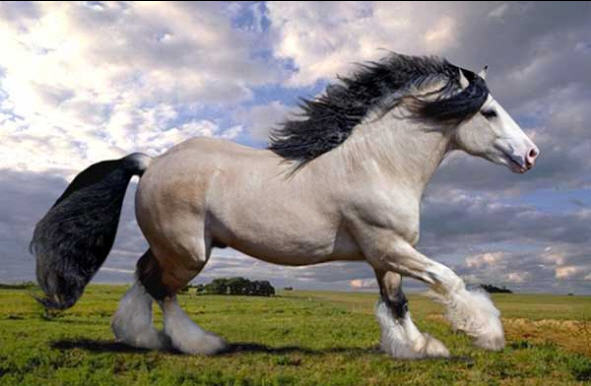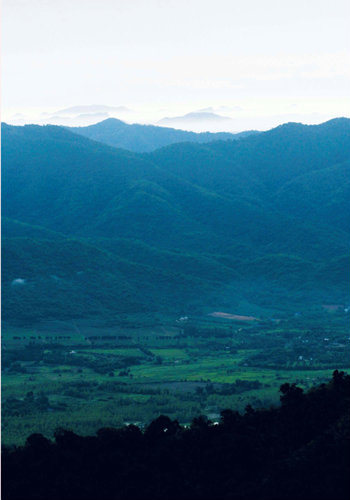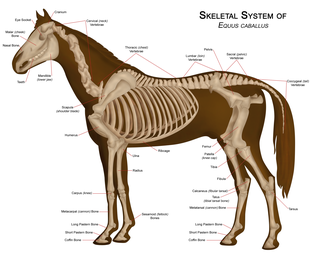GOLF ^^
วันศุกร์ที่ 15 กุมภาพันธ์ พ.ศ. 2556
Bastille Day
Bastille Day is the name given in English-speaking countries to the French National Day, which is celebrated on the 14th of July each year. In France, it is formally called La Fête Nationale (French pronunciation: [la.fɛt.na.sjɔ'nal] ; The National Celebration) and commonly Le quatorze juillet (French pronunciation: [lə.ka.tɔʁz.ʒɥi'jɛ] ; the fourteenth of July). It commemorates the 1790 Fête de la Fédération, held on the first anniversary of the storming of the Bastille on 14 July 1789; the anniversary of the storming of the Bastillefortress-prison was seen as a symbol of the uprising of the modern nation, and of the reconciliation of all the French inside the constitutional monarchy which preceded the First Republic, during the French Revolution. Festivities and official ceremonies are held all over France. The oldest and largest regular military parade in Europe is held on the morning of 14 July, on the Champs-Élysées avenue in Paris in front of the President of the Republic, French officials and foreign guests.
Events and traditions of the day
The Bastille Day Military Parade opens with cadets from the École Polytechnique, Saint-Cyr, École Navale, and so forth, then other infantry troops, then motorized troops; aircraft of the Patrouille de France aerobatics team fly above. In recent times, it has become customary to invite units from France's allies to the parade; in 2004 during the centenary of the Entente Cordiale, British troops (the band of the Royal Marines, the Household flying overhead. In 2007 the German 26th Airborne Brigade led the march followed by British Royal Marines.
The president used to give an interview to members of the press, discussing the situation of the country, recent events and projects for the future. Nicolas Sarkozy, elected president in 2007, chose not to give it.
History The storming of the Bastille
Main article: Storming of the Bastille
On 19 May 1789, Louis XVI convened the Estates-General to hear their grievances. The deputies of the Third Estate representing the common people (the two others were the Catholic Church and nobility) decided to break away and form a National Assembly. On 20 June the deputies of the Third Estate took the Tennis Court Oath, swearing not to separate until a constitution had been established. They were gradually joined by delegates of the other estates; Louis XVI started to recognize their validity on 27 June. The assembly renamed itself the National Constituent Assembly on 9 July, and began to function as a legislature and to draft a constitution.
In the wake of the 11 July dismissal of Jacques Necker, the people of Paris, fearful that they and their representatives would be attacked by the royal military, and seeking to gain ammunition and gunpowder for the general populace, stormed the Bastille, a fortress-prison in Paris which had often held people jailed on the basis of lettres de cachet, arbitrary royal indictments that could not be appealed. Besides holding a large cache of ammunition and gunpowder, the Bastille had been known for holding political prisoners whose writings had displeased the royal government, and was thus a symbol of the absolutism of the monarchy. As it happened, at the time of the siege in July 1789 there were only seven inmates, none of great political significance.
When the crowd—eventually reinforced by mutinous gardes françaises—proved a fair match for the fort's defenders, Governor de Launay, the commander of the Bastille, capitulated and opened the gates to avoid a mutual massacre. However, possibly because of a misunderstanding, fighting resumed. Ninety-eight attackers and just one defender died in the actual fighting, but in the aftermath, de Launay and seven other defenders were killed, as was the 'prévôt des marchands' (roughly, mayor) Jacques de Flesselles.
Shortly after the storming of the Bastille, on 4 August feudalism was abolished and on 26 August, the Declaration of the Rights of Man and of the Citizen proclaimed.
Claude Monet, Rue Montorgueil, Paris, Festival of 30 June 1878.
The Fête de la Fédération
Main article: Fête de la Fédération
The Fête de la Fédération on the 14 July 1790 was a huge feast and official event to celebrate the uprising of the short-lived constitutional monarchy in France and what people considered the happy conclusion of the French Revolution. The event took place on the Champ de Mars, which was at the time far outside Paris. The place had been transformed on a voluntary basis by the population of Paris itself, in what was recalled as the Journée des brouettes ("Wheelbarrow Day").
A mass was celebrated by Talleyrand, bishop of Autun. The popular General Lafayette, as captain of the National Guard of Paris and confidant of the king, took his oath to the constitution, followed by the King Louis XVI. After the end of the official celebration, the day ended in a huge four-day popular feast and people celebrated with fireworks, as well as fine wine and running naked through the streets in order to display their great freedom.
Origin of the present celebration
On 30 June 1878, a feast had been arranged in Paris by official decision to honour the French Republic (the event was commemorated in a painting by Claude Monet). On 14 July 1879, another feast took place, with a semi-official aspect; the events of the day included a reception in the Chamber of Deputies, organised and presided over by Léon Gambetta, a military review in Longchamp, and a Republican Feast in the Pré Catelan. All through France, Le Figaro wrote, "people feasted much to honour the storming of the Bastille".
On 21 May 1880, Benjamin Raspail proposed a law to have "the Republic choose the 14 July as a yearly national holiday". The Assembly voted in favour of the proposal on 21 May and 8 June. The Senate approved on it 27 and 29 June, favouring 14 July against 4 August (honouring the end of the feudal system on 4 August 1789). The law was made official on 6 July 1880, and the Ministry of the Interior recommended to Prefects that the day should be "celebrated with all the brilliance that the local resources allow".[this quote needs a citation] Indeed, the celebrations of the new holiday in 1880 were particularly magnificent.
In the debate leading up to the adoption of the holiday, Henri Martin, chairman of the French Senate, addressed that chamber on 29 June 1880:
Do not forget that behind this 14 July, where victory of the new era over the ancien régime was bought by fighting, do not forget that after the day of 14 July 1789, there was the day of 14 July 1790.... This [latter] day cannot be blamed for having shed a drop of blood, for having divided the country. It was the consecration of the unity of France.... If some of you might have scruples against the first 14 July, they certainly hold none against the second. Whatever difference which might part us, something hovers over them, it is the great images of national unity, which we all desire, for which we would all stand, willing to die if necessary.
Bastille Day Military Parade
Main article: Bastille Day Military Parade
The Bastille Day Military Parade is the French military parade that has been held on the morning of 14 July each year in Paris since 1880. While previously held elsewhere within or near the capital city, since 1918 it has been held on the Champs-Élysées, with the evident agreement of the Allies as represented in the Versailles Peace Conference, and with the exception of the period of German occupation from 1940 to 194 The parade passes down the Champs-Élysées from the Arc de Triomphe to the Place de la Concorde, where the President of the French Republic, his government and foreign ambassadors to France stand. This is a popular event in France, broadcast on French TV, and is the oldest and largest regular military parade in Europe. In some years, invited detachments of foreign troops take part in the parade and foreign statesmen attend as guests.
Smaller military parades are held in French garrison towns, including Toulon and Belfort, with local troops.
วันพฤหัสบดีที่ 24 มกราคม พ.ศ. 2556
Valentine's Day
Saint Valentine's Day, commonly known as Valentine's Day, or the Feast of Saint Valentine, is observed on February 14 each year. Today Valentine's Day is celebrated in many countries around the world, mostly in the West, although it remains a working day in many of them.
St. Valentine's Day began as a liturgical celebration of one or more early Christian saints named Valentinus. The most popular martyrology associated with Saint Valentine was that he was imprisoned for performing weddings for soldiers who were forbidden to marry and for ministering to Christians, who were persecuted under the Roman Empire; during his imprisonment, he is said to have healed the daughter of his jailer Asterius. Legend states that before his execution he wrote "from your Valentine" as a farewell to her.Today, Saint Valentine's Day is an official feast day in the Anglican Communion, as well as in the Lutheran Church.[8] The Eastern Orthodox Church also celebrates Saint Valentine's Day, albeit on July 6th and July 30th, the former date in honor of the Roman presbyter Saint Valentine, and the latter date in honor of Hieromartyr Valentine, the Bishop of Interamna (modern Terni).
The day was first associated with romantic love in the circle of Geoffrey Chaucer in the High Middle Ages, when the tradition of courtly love flourished. By the 15th century, it had evolved into an occasion in which lovers expressed their love for each other by presenting flowers, offering confectionery, and sending greeting cards (known as "valentines").[1][3] Valentine's Day symbols that are used today include the heart-shaped outline, doves, and the figure of the winged Cupid. Since the 19th century, handwritten valentines have given way to mass-produced greeting cards.
วันจันทร์ที่ 12 พฤศจิกายน พ.ศ. 2555
อาหารบำรุงสายตา

อาหารดีมีประโยชน์ต่อสุขภาพฉันใด อาหารบำรุงสายตาก็มีความจำเป็นต่อสุขภาพสายตาที่ดีฉันนั้น การมองเห็นเป็นสิ่งที่วิเศษสุดของคนเรา สุขภาพสายตาควรได้รับการดูแลอย่างดี
ด้วยการใช้ดวงตาอย่างทะนุถนอมและรู้จักดูแลบำรุงรักษาสายตาด้วยการเลือกกินอาหารที่มีสารอาหารและวิตามินบำรุงสายตา
อาหารบำรุงสายตา จะมีวิตามินเอ สารอาหารที่ชื่อว่า ลูทีน (Lutein) และซีแซนทีน (Zeaxanthin) เป็นสารอาหารสำคัญในอาหารบำรุงสายตา วิตามินเอจะได้จากอาหารจำพวก ตับไก่ ตับหมู ไข่แดง ฟักทอง ฯลฯ สำหรับสารอาหารลูทีน (Lutein) และ ซีแซนทีน(Zeaxanthin) นั้นเหมาะสำหรับคนที่ห่วงใยสุขภาพสายตาอย่างจริงจังและคนที่ทำงานโดยใช้สายตามากเช่น คนที่ต้องนั่งทำงานหน้าจอคอมพิวเตอร์เป็นเวลานานๆในแต่ละวันหรือต้องทำงานอยู่กลางแจ้งที่มีแสงแดดจ้า คนที่ต้องขับรถกลางคืนบ่อยๆที่มักจะถูกแสงไฟรถที่วิ่งสวนมาสาดเข้าตาบ่อยๆในลักษณะเดียวกับแสงไฟแฟลชจากกล้องถ่ายรูปทำให้สายตาต้องทำงานหนักเมื่อเจอแสงสว่างในลักษณะนี้
 สารอาหารลูทีน (Lutein) และซีแซนทีน (Zeaxanthin)นั้นจะอยู่ในจุดรับภาพของดวงตาคนเรา สารอาหารทั้งสองตัวนี้จะช่วยกรองแสงหรือป้องกันรังสีที่จะทำให้เกิดอันตรายต่อดวงตา นอกจากนี้ลูทีน(Lutein) และ ซีแซนทีน(Zeaxanthin)ยังช่วยปกป้องไม่ให้เซลล์ของจอประสาทตาถูกทำลาย ดังนั้นการบำรุงรักษาสายตาทำได้โดยรู้จักเลือกกินอาหารที่มีสารลูทีน(Lutein)และซีแซนทีน(Zeaxanthin)อยู่เพื่อประโยชน์ในการบำรุงสายตา
สารอาหารลูทีน (Lutein) และซีแซนทีน (Zeaxanthin)นั้นจะอยู่ในจุดรับภาพของดวงตาคนเรา สารอาหารทั้งสองตัวนี้จะช่วยกรองแสงหรือป้องกันรังสีที่จะทำให้เกิดอันตรายต่อดวงตา นอกจากนี้ลูทีน(Lutein) และ ซีแซนทีน(Zeaxanthin)ยังช่วยปกป้องไม่ให้เซลล์ของจอประสาทตาถูกทำลาย ดังนั้นการบำรุงรักษาสายตาทำได้โดยรู้จักเลือกกินอาหารที่มีสารลูทีน(Lutein)และซีแซนทีน(Zeaxanthin)อยู่เพื่อประโยชน์ในการบำรุงสายตา อาหารที่มีลูทีน (Lutein) และ ซีแซนทีน(Zeaxanthin) ที่ช่วยบำรุงสายตาได้แก่อาหารจำพวกพืชผักผลไม้ที่มีสีเขียวเข้มและสีเหลืองเช่น ผักคะน้า ผักปวยเล้ง ผักโขมและข้าวโพด สารอาหารที่จำเป็นในการบำรุงสายตาควบคู่ไปกับลูทีน (Lutein) และ ซีแซนทีน (Zeaxanthin)ก็คือวิตามินเอที่ได้จากอาหารจำพวกฟักทอง
อาหารที่มีลูทีน (Lutein) และ ซีแซนทีน(Zeaxanthin) ที่ช่วยบำรุงสายตาได้แก่อาหารจำพวกพืชผักผลไม้ที่มีสีเขียวเข้มและสีเหลืองเช่น ผักคะน้า ผักปวยเล้ง ผักโขมและข้าวโพด สารอาหารที่จำเป็นในการบำรุงสายตาควบคู่ไปกับลูทีน (Lutein) และ ซีแซนทีน (Zeaxanthin)ก็คือวิตามินเอที่ได้จากอาหารจำพวกฟักทองผักบุ้ง ฯลฯ นอกจากนี้สารอาหารทั้งสองตัวนี้ยังช่วยลดความเสี่ยงในการเป็นโรคต้อกระจก(Cataracts) โรคกระจกตาเสื่อม(AMD) มะเร็งเต้านมและโรคหลอดเลือดหัวใจอีกด้วย
 การดูแลรักษาสุขภาพดวงตาให้มีสุขภาพดี นอกจากจะรู้จักเลือกกินอาหารบำรุงสายตาที่มีสารลูทีน (Lutein) ซีแซนทีน (Zeaxanthin) และวิตามินเอแล้วยังมีสิ่งที่ต้องทำควบคู่กันไปเพื่อให้เกิดผลดีต่อสุขภาพของสายตานั่นคือ การปรับเปลี่ยนพฤติกรรมการใช้สายตาในการทำงานเช่น ใช้แผ่นกรองแสงกับจอคอมพิวเตอร์และปรับลดระดับแสงสว่างจากจอคอมพิวเตอร์ให้พอเหมาะอย่าให้สว่างจ้ามากเกินไป เมื่อทำงานที่ต้องใช้สายตามากๆเป็นเวลานานให้รู้จักหยุดพักสายตาบ้างสัก 3-5 นาทีแล้วค่อยกลับไปทำงานต่อ เมื่อต้องทำงานกลางแจ้งเป็นเวลานานควรสวมแว่นกันแดดเพื่อลดปริมาณแสงที่จะเข้ามายังตาของเรา
การดูแลรักษาสุขภาพดวงตาให้มีสุขภาพดี นอกจากจะรู้จักเลือกกินอาหารบำรุงสายตาที่มีสารลูทีน (Lutein) ซีแซนทีน (Zeaxanthin) และวิตามินเอแล้วยังมีสิ่งที่ต้องทำควบคู่กันไปเพื่อให้เกิดผลดีต่อสุขภาพของสายตานั่นคือ การปรับเปลี่ยนพฤติกรรมการใช้สายตาในการทำงานเช่น ใช้แผ่นกรองแสงกับจอคอมพิวเตอร์และปรับลดระดับแสงสว่างจากจอคอมพิวเตอร์ให้พอเหมาะอย่าให้สว่างจ้ามากเกินไป เมื่อทำงานที่ต้องใช้สายตามากๆเป็นเวลานานให้รู้จักหยุดพักสายตาบ้างสัก 3-5 นาทีแล้วค่อยกลับไปทำงานต่อ เมื่อต้องทำงานกลางแจ้งเป็นเวลานานควรสวมแว่นกันแดดเพื่อลดปริมาณแสงที่จะเข้ามายังตาของเราอาหารบำรุงสายตาช่วยให้ดวงตาได้รับสารอาหารที่มีประโยชน์ต่อดวงตาและการปรับพฤติกรรมการทำงานที่ต้องใช้สายตามากๆจะเป็นการป้องกันและช่วยถนอมรักษาดวงตา หากทำทั้งสองอย่างไปพร้อมกันก็เหมือนกับการบำรุงรักษาสายตาจากภายใน (กินอาหารบำรุงสายตา) และป้องกันอันตรายรบกวนกับสายตาจากภายนอก (ปรับพฤติกรรมการใช้สายตา) ซึ่งจะมีผลช่วยถนอมและรักษาดวงตาให้อยู่กับเราไปได้อีกนานเท่านาน
วันอาทิตย์ที่ 16 กันยายน พ.ศ. 2555
แม่น้ำแม่กลอง
แม่น้ำแม่กลอง เป็นแม่น้ำสำคัญสายหนึ่งในภาคตะวันตก เกิดจากแม่น้ำแควใหญ่และแควน้อย ไหลมาบรรจบกันที่ตำบลปากแพรก อำเภอเมือง จังหวัดกาญจนบุรี ไหลผ่านจังหวัดราชบุรี สมุทรสงคราม และไหลลงสู่ปากอ่าวไทยที่อำเภอเมือง จังหวัดสมุทรสงคราม มีความยาวประมาณ 132 กิโลเมตร พื้นที่รับน้ำที่ปากแม่น้ำแม่กลอง 30,106 ตารางกิโลเมตร
มีพื้นที่ลุ่มน้ำ 30,837 ตร.กม. หรือ 19.45 ล้านไร่ ครอบคลุมพื้นที่ 8 จังหวัด ได้แก่ กาญจนบุรี ราชบุรี สมุทรสงคราม บางส่วนของจ.สุพรรณบุรี นครปฐม สมุทรสาคร อุทัยธานี และ ตาก ปริมาณน้ำท่ารายปีเฉลี่ย 7,973 ล้าน ลบ.ม.
ลุ่มน้ำแม่กลองแบ่งออก เป็นลุ่มน้ำย่อย 14 ลุ่มน้ำย่อย ได้แก่ แม่น้ำแควใหญ่ (1,445 ตร.กม.) ห้วยแม่ละมุง (910 ตร.กม.) ห้วยแม่จัน (862 ตร.กม.) แม่น้ำแควใหญ่ตอนกลาง (3,380 ตร.กม.) แม่น้ำแควใหญ่ตอนล่าง (4,094 ตร.กม.) ห้วยขาแข้ง (2,320 ตร.กม.) ห้วยตะเพียน (2,627 ตร.กม.) แม่น้ำแควน้อยตอนบน (3,947 ตร.กม.) ห้วยเขย็ง (1,015 ตร.กม.) ห้วยแม่น้ำน้อย (947 ตร.กม.) ห้วยบ้องตี้ (477 ตร.กม.) แม่น้ำแควน้อยตอนกลาง (2,042 ตร.กม.) ลำภาชี (2,453 ตร.กม.) ทุ่งราบแม่น้ำแม่กลอง (4,318 ตร.กม.)
วันพฤหัสบดีที่ 23 สิงหาคม พ.ศ. 2555
แชงเก้นวีซ่า (Schengen Visa)
Schengen Visa นั้นใช้ได้กับประเทศแถบยุโรปที่เป็นสมาชิก Schengen Visa เหมาะสำหรับนักท่องเที่ยว ที่เดินทางไปเที่ยวยุโรป หลายประเทศต่อเนื่องกันในทริปเดียว โดยสามารถยื่นคำร้องขอวีซ่า แบบเดินทางเข้า - ออกครั้งเดียว หรือเดินทางเข้า - ออกหลายครั้งก็ได้ แต่ทั้งนี้รวมเวลาที่พำนักทั้งหมดแล้ว ต้องไม่เกิน 90 วัน ภายในระยะเวลา 6 เดือน โดยเริ่มนับตั้งแต่วันแรกที่เดินทางเข้าประเทศในกลุ่มสัญญาเชงเก็น
การทำ Schengen Visa จะทำให้นักท่องเที่ยวไม่ต้องเสียเวลายื่นวีซ่าขอเข้าประเทศ กับทุกๆ ประเทศที่จะเดินทางเข้าไปเที่ยว มีเพียง Schengen Visa ก็สามารถเข้าได้ทุกประเทศที่เป็นสมาชิก Schengen สำหรับ Schengen Visa นั้น ให้ยื่นคำร้องขอวีซ่าต่อสถานทูตของประเทศที่ จะเดินทางเข้าไปเป็นประเทศแรกที่ผู้เดินทาง เดินทางไปถึงยุโรป (ตัวอย่างเช่น เดินทางไป อิตาลี - สวิส - ฝรั่งเศส ประเทศที่จะออก Schengen Visa ให้คือ ประเทศ อิตาลี)
ออสเตรีย
เบลเยี่ยม
เดนมาร์ก
ฟินแลนด์
ฝรั่งเศส
เยอรมัน
กรีซ
ไอซ์แลนด์
อิตาลี
ลักเซมเบิร์ก
เนเธอร์แลนด์
นอร์เวย์
โปรตุเกส
สเปน
สวีเดน
การทำ Schengen Visa จะทำให้นักท่องเที่ยวไม่ต้องเสียเวลายื่นวีซ่าขอเข้าประเทศ กับทุกๆ ประเทศที่จะเดินทางเข้าไปเที่ยว มีเพียง Schengen Visa ก็สามารถเข้าได้ทุกประเทศที่เป็นสมาชิก Schengen สำหรับ Schengen Visa นั้น ให้ยื่นคำร้องขอวีซ่าต่อสถานทูตของประเทศที่ จะเดินทางเข้าไปเป็นประเทศแรกที่ผู้เดินทาง เดินทางไปถึงยุโรป (ตัวอย่างเช่น เดินทางไป อิตาลี - สวิส - ฝรั่งเศส ประเทศที่จะออก Schengen Visa ให้คือ ประเทศ อิตาลี)
ออสเตรีย
เบลเยี่ยม
เดนมาร์ก
ฟินแลนด์
ฝรั่งเศส
เยอรมัน
กรีซ
ไอซ์แลนด์
อิตาลี
ลักเซมเบิร์ก
เนเธอร์แลนด์
นอร์เวย์
โปรตุเกส
สเปน
สวีเดน
วันอังคารที่ 31 กรกฎาคม พ.ศ. 2555
Horse

The horse (Equus ferus caballus) is one of two extant subspecies of Equus ferus, or the wild horse. It is an odd-toed ungulate mammal belonging to the taxonomic familyEquidae. The horse has evolved over the past 45 to 55 million years from a small multi-toed creature into the large, single-toed animal of today. Humans began to domesticatehorses around 4000 BC, and their domestication is believed to have been widespread by 3000 BC. Horses in the subspecies caballus are domesticated, although some domesticated populations live in the wild as feral horses. These feral populations are not true wild horses, as this term is used to describe horses that have never been domesticated, such as the endangered Przewalski's Horse, a separate subspecies, and the only remaining true wild horse. There is an extensive, specialized vocabulary used to describe equine-related concepts, covering everything from anatomy to life stages, size,colors, markings, breeds, locomotion, and behavior.
Horses' anatomy enables them to make use of speed to escape predators and they have a well-developed sense of balance and a strong fight-or-flight instinct. Related to this need to flee from predators in the wild is an unusual trait: horses are able to sleep both standing up and lying down. Female horses, called mares, carry their young for approximately 11 months, and a young horse, called a foal, can stand and run shortly following birth. Most domesticated horses begin training under saddle or in harnessbetween the ages of two and four. They reach full adult development by age five, and have an average lifespan of between 25 and 30 years.
Horse breeds are loosely divided into three categories based on general temperament: spirited "hot bloods" with speed and endurance; "cold bloods", such as draft horses and some ponies, suitable for slow, heavy work; and "warmbloods", developed from crosses between hot bloods and cold bloods, often focusing on creating breeds for specific riding purposes, particularly in Europe. There are more than 300 breeds of horses in the world today, developed for many different uses.
Horses and humans interact in a wide variety of sport competitions and non-competitive recreational pursuits, as well as in working activities such as police work, agriculture, entertainment, and therapy. Horses were historically used in warfare, from which a wide variety of riding and driving techniques developed, using many different styles ofequipment and methods of control. Many products are derived from horses, including meat, milk, hide, hair, bone, and pharmaceuticals extracted from the urine of pregnant mares. Humans provide domesticated horses with food, water and shelter, as well as attention from specialists such as veterinarians and farriers.
The horse skeleton averages 205 bones. A significant difference between the horse skeleton and that of a human is the lack of a collarbone—the horse's forelimbs are attached to the spinal column by a powerful set of muscles, tendons, and ligaments that attach the shoulder blade to the torso. The horse's legs and hooves are also unique structures. Their leg bones are proportioned differently from those of a human. For example, the body part that is called a horse's "knee" is actually made up of the carpal bones that correspond to the human wrist. Similarly, the hock contains bones equivalent to those in the human ankle and heel. The lower leg bones of a horse correspond to the bones of the human hand or foot, and the fetlock (incorrectly called the "ankle") is actually the proximal sesamoid bones between the cannon bones (a single equivalent to the human metacarpal or metatarsal bones) and the proximal phalanges, located where one finds the "knuckles" of a human. A horse also has no muscles in its legs below the knees and hocks, only skin, hair, bone, tendons, ligaments, cartilage, and the assorted specialized tissues that make up the hoof.
วันอังคารที่ 19 มิถุนายน พ.ศ. 2555
เขากระโจม

เป็นยอดเขาสุดเขตชายแดนระหว่างไทย-พม่า ตั้งอยู่ในแนวเทือกเขาตะนาวศรี มีความสูงจากระดับน้ำทะเลประมาณ 1,045 เมตร บริเวณนี้เป็นที่อาศัยของของชุมชนชาวกะเหรี่ยงซึ่งอพยพมาจากเมืองทวายประเทศพม่า ชาวกะเหรี่ยงเรียกยอดเขานี้ว่า "เขาลันดา" ซึ่งหมายถึง ภูเขาที่มีที่ราบ ส่วนชื่อ "เขากระโจม" นั้นได้รับฉายามาจากคนไทยที่เข้าไปทำเหมืองแร่ แล้วมองเห็นยอดเขาดูดล้ายกระโจมของชนเผ่าอินเดียนแดงนั่นเองที่นี่นับเป็นจุดชมทะเลหมอก ทิวทัศน์ขุนเขาฝั่งพม่า และชมพระอาทิตย์ขึ้นพร้อมแสงแรกแห่งวันที่สวยที่สุดในสวนผึ้ง
การเดินทางขึ้นเขากระโจมค่อนข้างลำบากเพราะเส้นทางลาดชันมากมีเพียงรถขับเคลื่อนสี่ล้อเท่านั้นที่จะพาเราขึ้นสู่ยอดเขาได้ ใครอยากขึ้นไปต้องตื่นแต่เช้ามืด ใช้เวลาเดินทางประมาณ 45 นาทีถึง 1 ชั่วโมง (ขึ้นอยู่กับฤดูกาลและความชำนาญของคนขับ) ระหว่างทางจะได้ชมทิวทัศน์ของผืนป่าเขียวขจีรอบด้านและเห็นสายหมอกเคลื่อนตัวอ้อยอิ่งอยู่เหนือหุบเขา เมื่อถึงยอดเขาก็จะเห็นทิวทัศน์ของเทือกเขาตะนาวศรีที่ทอดตัวยาวไปถึงชายแดนประเทศเพื่อนบ้าน ท่ามกลางทะเลหมอกในยามเช้าและอากาศที่หนาวเย็นจับใจ ข้างบนมีลานกางเต้นท์สำหรับนักท่องเที่ยว แต่ไม่มีสิ่งอำนวยความสะดวกอื่นๆนอกจากห้องน้ำ
ขากลับจากชมทะเลหมอกแนะนำให้แวะเที่ยวน้ำตกผาแดงน้ำตกธรรมชาติที่ซ่อนตัวอยู่ในราวป่า มีต้นน้ำมาจากห้วยลันดาโดดเด่นด้วยผาหินสีแดงสมชื่อ ในอดีตเคยเป็นแหล่งน้ำที่ใช้สำหรับร่อนแร่ดีบุกและวุลแฟรม หากเดินทางไปเที่ยวในช่วงฤดูฝนให้ระวังตัวทากด้วย
สมัครสมาชิก:
บทความ (Atom)




